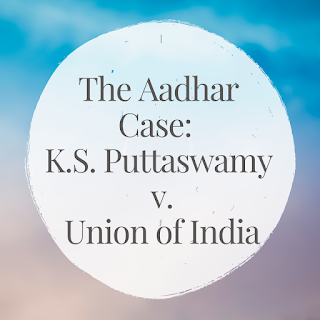What is Aadhar?
Aadhar is India’s National Identity project for which a new agency known as the Unique Identification Authority of India (UIDAI) was formulated. In an Aadhar, the biometric data such as fingerprints scan, eye-retina scan, a facial scan of Indian residents is collected, recorded, and stored. The residents are then issued a twelve digit identification number. The objective of introducing the scheme of Aadhar was to make public delivery service more efficient and curb corruption.
The drawback of making Aadhar a compulsion
Conflict of interest on Aadhar between government and general public
The Aadhar consisted of biometric which included fingerprint scan, retina scan, and facial scan. This data was collected by the Indian Government and stored at a central server. If such data is leaked there are high chances of it getting misused.
Initially, if the policemen wanted to search one’s house or get certain proofs then they have to get a warrant, follow protocols and procedures, and even collect other required documents. But in today’s fast modern world, technology is so rapidly moving that the central agency can track one’s location, account statement, and conversation at one click. Thus, the right to privacy is an important fundamental right.
Right to Privacy
In the MP Sharma case where there was a bench of eight judges and in the Kharak Singh case where there was a bench of six judges, the Supreme Court held that the Indian Constitution does not guarantee the Right to Privacy.
But, later where there was a smaller bench of judges in the Maneka Gandhi Case, Govind v. State of Madhya Pradesh, and R. Rajgopal v. State of Tamil Nadu, the Supreme Court guaranteed the Right to Privacy under the Indian Constitution.
There were a lot of conflicts about whether the Right to Privacy is guaranteed under the Indian Constitution or not.
Case: K.S. Puttaswamy v. Union of India
It is also known as the Aadhar Case and is also one of the lengthiest and the longest case in the history of Indian Courts.
Facts
In 2012, the former Judge of Karnataka High Court retired Justice K.S. Puttaswamy filed a petition in the Supreme Court against relating Aadhar card to the government schemes and making it compulsory. He stated that this act of relating Aadhar card to the government schemes violates the right to privacy. Moreover, the public welfare schemes are meant for the public and are a fundamental right for them and the government cannot stop it for any reason by mandating a condition.
This case was divided into two parts, firstly, it challenged the validity of the Aadhar Act for which a bench of 5 judges was constituted, and secondly, to discuss a constitutional question that stated “Is right to privacy a fundamental right?” for which a bench of 9 judges was constituted.
For the first part, Justice K.S. Puttaswamy stated that the Government of India has stored all the biometric data of the general public in a central server but no safety measures have been taken to secure the data. Moreover, any private entity can use this data for authentication. Further, it has not been specified that for what purposes shall government use this data. Additionally, all the welfare schemes introduced by the Government of India are themselves a fundamental right and thus, the benefits of those schemes cannot be curbed under any circumstances.
Judgement
For the first part, on 26th September 2018, a bench of 5 judges held that the Aadhar Act has constitutional validity, and providing demographic or biometric data is not violative of any fundamental right. This bench also deemed some parts of the Aadhar Act as unconstitutional such as Section 57, Section 33(1), Section 33(2), Section 47, and Section 2(d). These provisions were either struck down for reframed.
For the second part, the Supreme Court delivered a landmark judgement by over-ruling the judgement of MP Sharma case and Kharak Singh case and held that Right to Privacy is a fundamental right and is protected under the Constitution of India, 1949.
Conclusion
Hence, the story behind the Aadhaar Case is that in 2011, the Government of India initiated a new identity document called as Aadhaar card for which established a new agency, the Unique Identification Authority of India (UIDAI), to issue the card. For the application of the card, a resident must submit the scan of their fingerprints and retina. All the data are stored in a centralized database.
Subsequently, the government made Aadhaar mandatory for several welfare schemes such as subsidised food under the Public Distribution System, Mid-day meal scheme and Mahatma Gandhi Rural Employment Guarantee Scheme etc.
That being said, this Aadhaar scheme was challenged by the retired judge of Karnataka High Court K.S. Puttaswamy before the SC. Therefore, the primary question to be considered by the Apex Court was whether the provisions of the Act were contrary to the right to privacy which has been established as a fundamental right sometime before.
References
https://www.youtube.com/watch?v=qbsprIphbpk&ab_channel=FinologyLegal
https://indiankanoon.org/doc/127517806/
https://blog.finology.in/constitutional-developments/aadhaar-card-verdict
https://www.uidai.gov.in/about-uidai/unique-identification-authority-of-india/about.html


